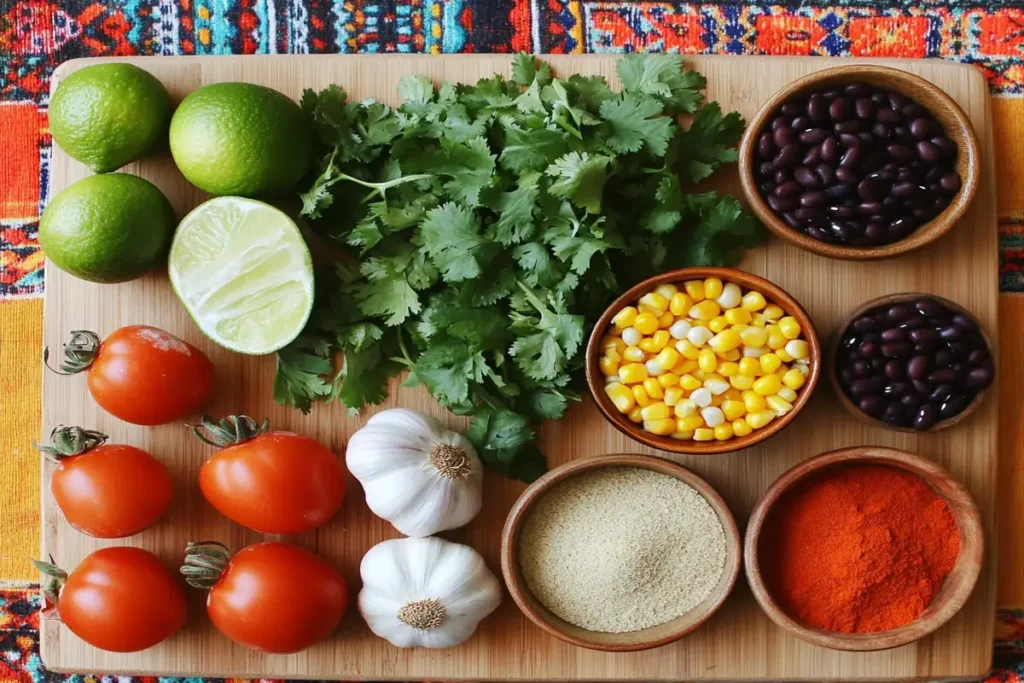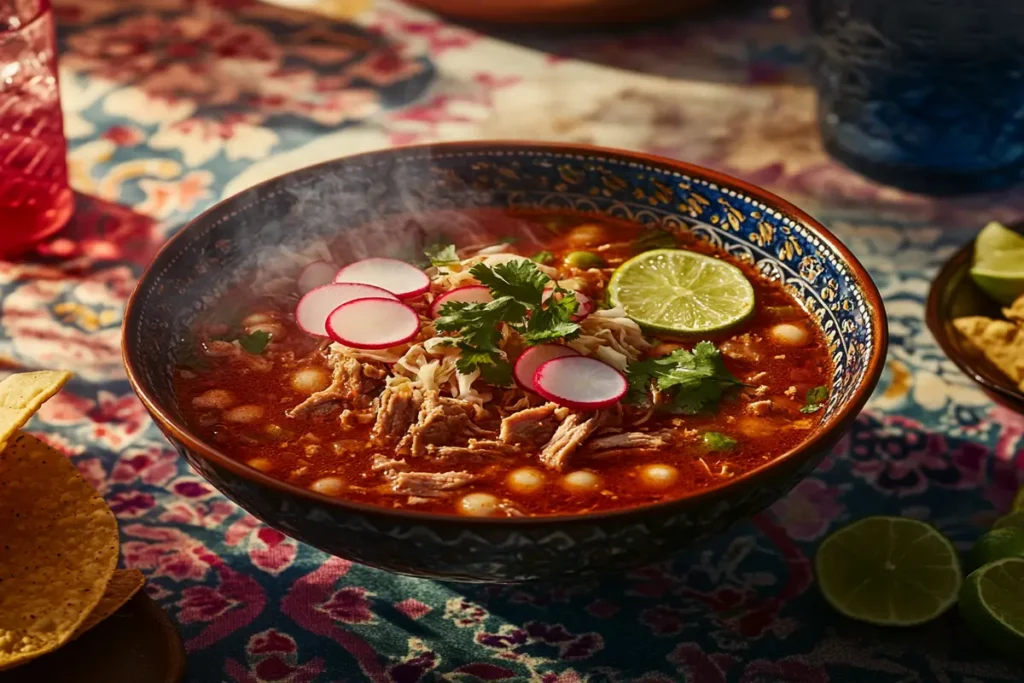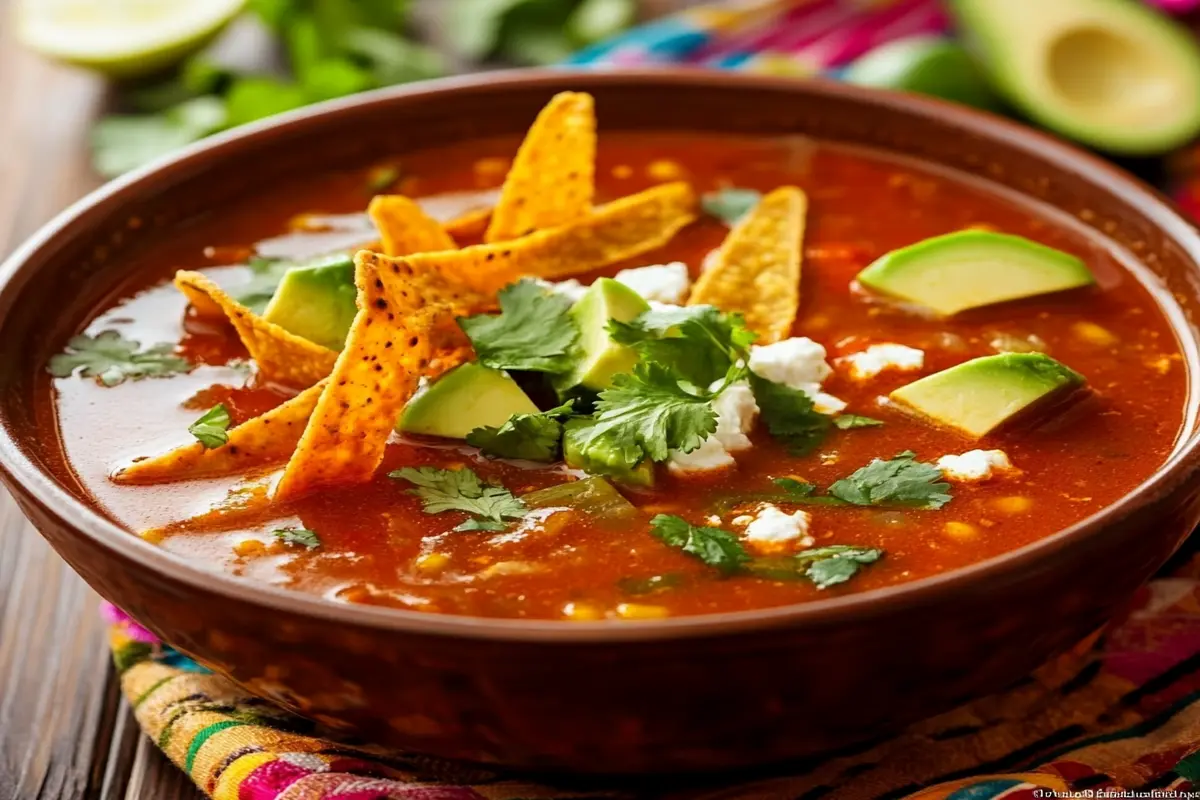There’s something magical about a bowl of Mexican soup. Whether it’s a steaming pot of Pozole on a chilly evening or a light Caldo de Pollo when you’re under the weather, these soups are more than just meals—they’re comfort, tradition, and love, all in one.
Mexican cuisine is famous for its bold flavors and rich history, and soups (or sopas) are no exception. From hominy-packed broths to hearty meatball soups, there’s a recipe for every craving. Let’s dive into the heart of Mexican soups, exploring their ingredients, flavors, and the best ways to make them at home.
The Building Blocks of Mexican Soups
Essential Ingredients: Flavor at Its Core
Mexican soups shine because of their simple, fresh ingredients that pack a punch:
- Chiles: Guajillo, ancho, and chipotle bring heat and smokiness.
- Tomatoes: Fresh or roasted for depth and acidity.
- Beans: Black or pinto beans add heartiness.
- Cilantro & Lime: A fresh, zesty finish that brightens any soup.
Protein Choices: What’s in the Pot?
Different proteins shape the soul of each soup:
- Chicken: A light and comforting choice, perfect for Caldo de Pollo.
- Pork: The rich, meaty backbone of Pozole.
- Beef: Essential for Caldo de Res, a hearty beef and vegetable soup.
- Seafood: Found in coastal dishes like Sopa de Mariscos.
Soup Bases: The Secret to Perfect Texture
Every great soup starts with a solid base:
- Broth: Chicken, beef, or veggie broth provides a flavorful foundation.
- Hominy: The star of Pozole, adding a chewy texture.
- Masa Harina: Thickens soups while lending a mild corn flavor.
Spices & Seasonings: The Flavor Boosters
Mexican soups wouldn’t be the same without these:
- Cumin & Oregano: Warm, earthy, and essential.
- Chili Powder: A smoky-spicy kick.
- Garlic & Epazote: Boost aroma and depth.
Vegetables: Fresh & Hearty Additions
Mexican soups embrace seasonal veggies:
- Zucchini & Corn: Light and slightly sweet.
- Potatoes & Onions: Add texture and absorb flavors beautifully.
Must-Try Traditional Mexican Soups

Mexican cuisine offers a wide variety of soups, each with a unique personality:
- Pozole: A deep, flavorful hominy soup with pork and a rich broth.
- Albondigas: A meatball soup packed with tender vegetables.
- Sopa de Tortilla: A zesty tomato-based soup with crispy tortilla strips.
- Caldo de Res: A beef and vegetable soup that warms the soul.
Regional Twists
Mexican soups reflect the country’s diverse regions:
- Veracruz: Seafood-heavy soups with bright, citrusy flavors.
- Jalisco: Home of the famous Pozole Rojo, rich with pork and chiles.
Each region adds a special touch, making Mexican soups a reflection of their local culture.
The Difference Between Cream of Chicken Soup & Condensed Cream of Chicken Soup
Ever wonder why some recipes call for cream of chicken soup, while others specify the condensed version? Here’s what you need to know:
Key Differences
| Feature | Cream of Chicken Soup | Condensed Cream of Chicken Soup |
|---|---|---|
| Water Content | Ready-to-eat, balanced consistency. | Thick and concentrated, needs dilution. |
| Usage | Served as-is or as a light base. | Ideal for casseroles, pot pies, and sauces. |
| Texture | Smooth and creamy. | Dense and paste-like. |
Nutritional Comparison
- Condensed soup is more calorie-dense and often higher in sodium.
- Many brands offer low-sodium options for a healthier alternative.
How to Substitute
If a recipe calls for condensed cream of chicken soup, but you only have regular:
➡ Simmer regular soup until it thickens, reducing liquid.
And if you have condensed soup but need regular?
➡ Mix it with equal parts water or milk for a balanced texture.
How to Make Soup Thicker & Creamier

Sometimes, a soup just needs a little extra body. Here’s how to thicken it without compromising flavor:
Basic Thickening Methods
- Simmering: Reduces excess liquid naturally.
- Adding Starches: Whisk in cornstarch, flour, or potato starch.
- Pureeing Ingredients: Blend part of the soup for a naturally creamy texture.
Dairy & Non-Dairy Options for Creaminess
Want to add creaminess? Here are some options:
- Heavy Cream or Milk: Classic rich texture.
- Yogurt: Adds tang with a creamy consistency.
- Coconut Milk: A great dairy-free alternative with a subtle sweetness.
- Cashew Cream: A thick, plant-based substitute.
Tip: To prevent curdling, always add dairy at the end and avoid boiling.
Menudo & Similar Soups
Menudo is one of Mexico’s most beloved soups, known for its bold flavors and comforting warmth. But what if you’re looking for something similar?
Soups That Resemble Menudo
- Pozole: Uses hominy like Menudo but swaps tripe for pork or chicken.
- Birria: A deeply spiced goat or beef stew, rich and flavorful.
- Pancita: Another tripe-based soup, often with a slightly different spice mix.
What Makes Menudo Unique?
- Tripe: The key ingredient that defines its texture.
- Hominy: Adds a chewy, satisfying bite.
- Cultural Significance: Often served on special occasions (and as a hangover cure!).
Menudo Substitutes for Different Preferences
Not a fan of tripe? No problem!
- Try shredded chicken or beef for a similar texture.
- For a vegetarian version, use mushrooms or jackfruit with a spiced vegetable broth.
FAQs: Quick Cooking Tips
1. What’s the best way to thicken soup without dairy?
Use blended veggies, cornstarch, or potato starch.
2. Can I use flour to thicken soup without making a roux?
Yes! Mix flour with cold water first, then whisk it into the soup.
3. My soup is too thick—how do I fix it?
Gradually add broth, water, or milk, stirring constantly.
4. What’s a good substitute for tripe in Menudo?
Shredded chicken, beef, or mushrooms work well.
5. Can I make creamy soup without a blender?
Yes! Mash vegetables with a potato masher or whisk for a smoother texture.
6. Is cashew cream a good alternative for heavy cream?
Absolutely! It’s thick, neutral in flavor, and dairy-free.
7. What’s the difference between Pozole and Menudo?
Pozole uses pork or chicken (no tripe), but both feature hominy and a flavorful broth.
8. How do I prevent curdling when adding dairy to soup?
Add it at the end and avoid boiling after mixing it in.
Final Thoughts: Your Next Soup Adventure
Mexican soups are a celebration of warmth, tradition, and bold flavors. Whether you’re stirring up a batch of Pozole, experimenting with fusion flavors, or thickening your favorite recipe, there’s always room to make it your own.

